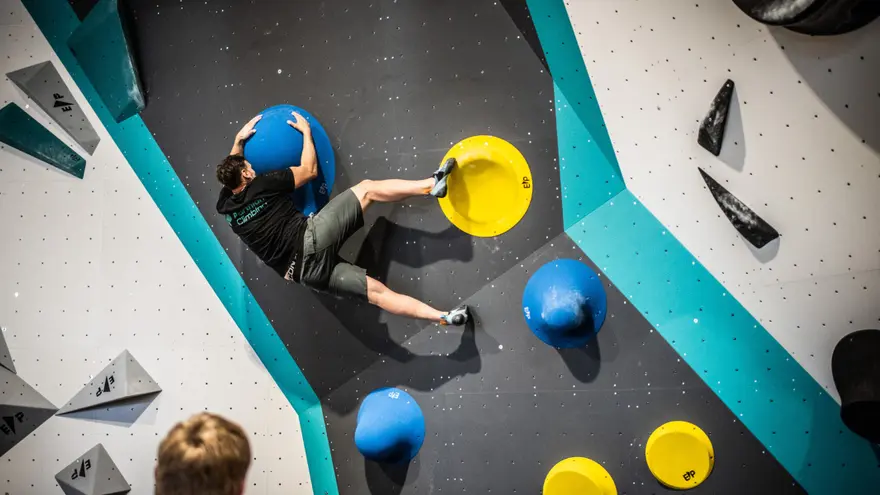Scaling New Heights: The Thrilling World of Recreational Climbing

Scaling New Heights: The Thrilling World of Recreational Climbing
Introduction: In the realm of outdoor recreation, few activities offer the exhilarating blend of physical challenge, mental focus, and awe-inspiring natural beauty quite like climbing. Whether ascending towering rock faces, navigating challenging indoor routes, or conquering icy slopes, climbing enthusiasts find joy and fulfillment in pushing their limits and communing with nature. Let's delve into the captivating world of recreational climbing and explore its diverse forms, benefits, and the culture that surrounds it.
The Diversity of Climbing: Climbing encompasses a variety of disciplines, each with its unique challenges and rewards. Rock climbing, perhaps the most iconic form of the sport, involves ascending natural or artificial rock formations using hands, feet, and specialized equipment such as ropes, harnesses, and carabiners. From bouldering—low-height, dynamic climbing without ropes—to traditional lead climbing and sport climbing on challenging routes, rock climbers revel in the physical and mental puzzle of finding their way up vertical terrain.
For those drawn to icy landscapes, ice climbing offers a thrilling alternative. Armed with ice axes, crampons, and a steely resolve, ice climbers ascend frozen waterfalls, glaciers, and steep snow-covered slopes, navigating ever-changing conditions and mastering the art of vertical movement in a frigid environment.
Indoor climbing, on the other hand, provides a controlled and accessible setting for climbers of all skill levels to hone their techniques and build strength. Climbing gyms offer a diverse array of routes, from beginner-friendly to expert-level challenges, allowing climbers to progress at their own pace and connect with a vibrant community of fellow enthusiasts.
Benefits Beyond the Summit: Beyond the physical and technical aspects, recreational climbing offers a host of benefits for body, mind, and spirit. Climbing engages muscles throughout the body, promoting strength, flexibility, and balance. As climbers navigate intricate sequences of movements and problem-solving challenges, they sharpen their focus, concentration, and mental resilience.
Moreover, climbing fosters a profound connection with nature and a sense of awe and wonder at the breathtaking landscapes it often inhabits. Whether scaling rugged cliffs, ascending alpine peaks, or clinging to icy walls, climbers immerse themselves in the raw beauty of the natural world, forging a deep appreciation for its power and majesty.
The Climbing Community: At the heart of recreational climbing lies a vibrant and inclusive community united by a shared passion for the sport. Climbing fosters camaraderie and mutual support, as climbers cheer each other on, share beta (information about routes), and celebrate victories large and small.
Climbing gyms serve as hubs of activity and social interaction, where climbers of all backgrounds and skill levels come together to train, learn, and connect. Outdoor climbing destinations likewise offer opportunities for shared adventures and unforgettable experiences, as climbers join forces to explore new routes, conquer challenges, and revel in the thrill of summiting together.
Conclusion: Recreational climbing is more than just a physical activity; it's a journey of self-discovery, adventure, and camaraderie. Whether scaling vertical cliffs, ascending icy peaks, or navigating indoor routes, climbers find joy, fulfillment, and a profound connection with the natural world.
As climbers push their limits, overcome challenges, and forge bonds with fellow enthusiasts, they embody the spirit of exploration, resilience, and community that defines the climbing experience. In a world filled with distractions and uncertainties, climbing offers a sanctuary—a place to challenge oneself, find solace in nature, and discover the boundless possibilities that lie beyond the horizon.
- Arts
- Business
- Computers
- Jogos
- Health
- Início
- Kids and Teens
- Money
- News
- Recreation
- Reference
- Regional
- Science
- Shopping
- Society
- Sports
- Бизнес
- Деньги
- Дом
- Досуг
- Здоровье
- Игры
- Искусство
- Источники информации
- Компьютеры
- Наука
- Новости и СМИ
- Общество
- Покупки
- Спорт
- Страны и регионы
- World


